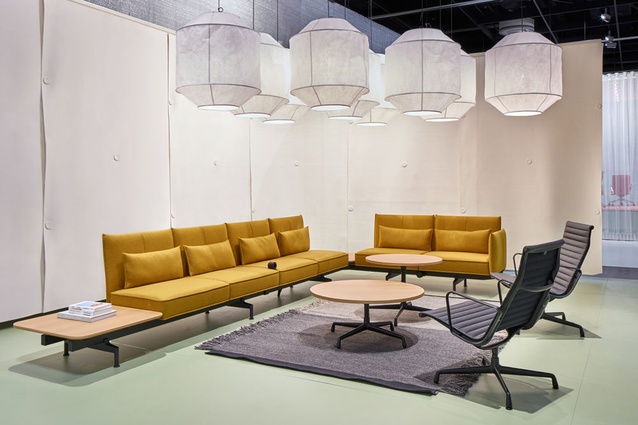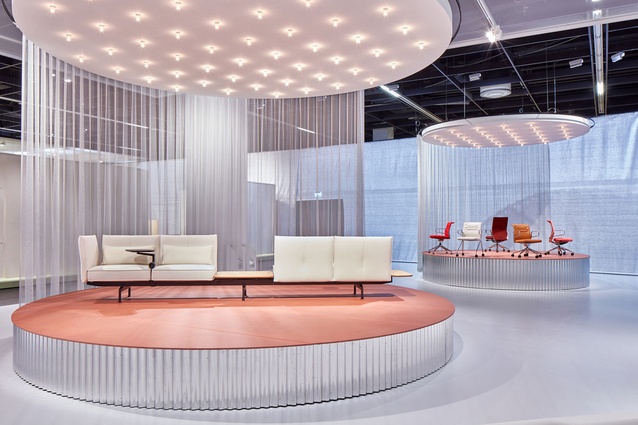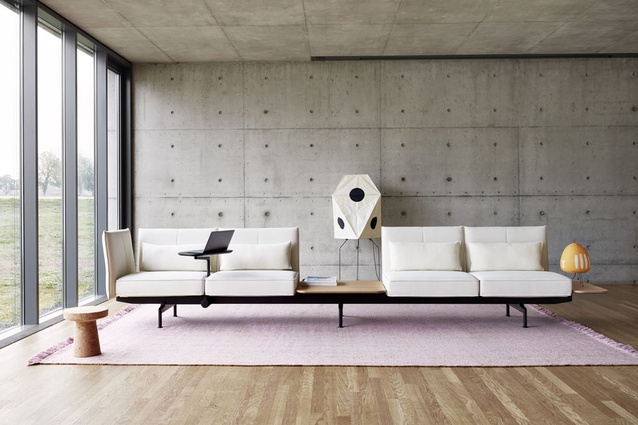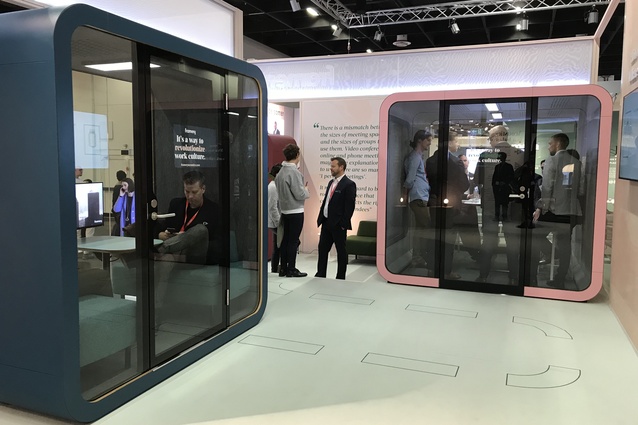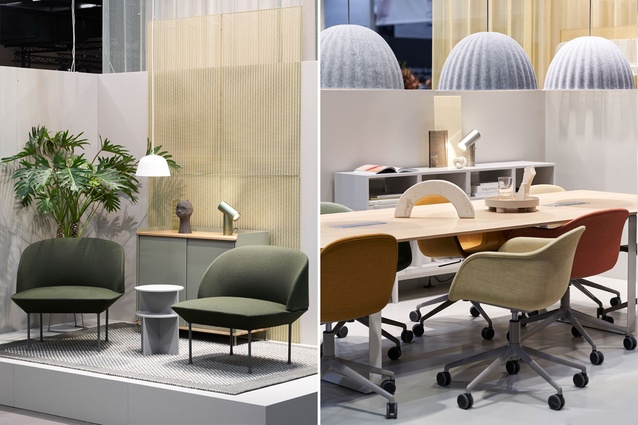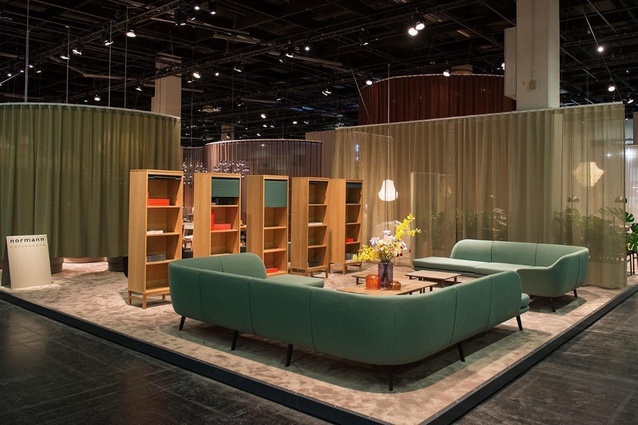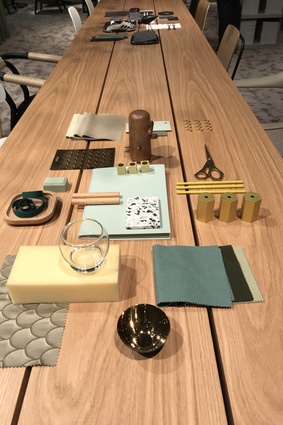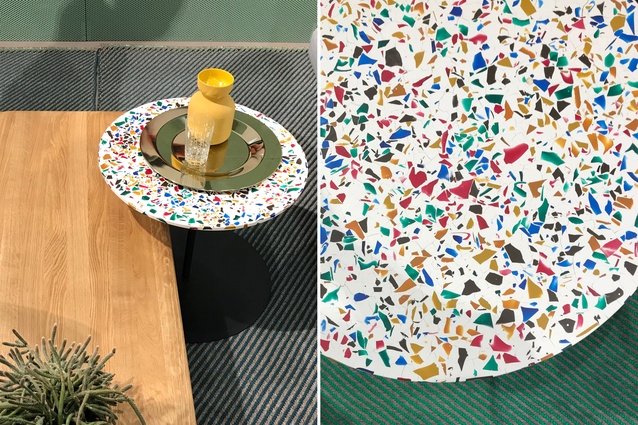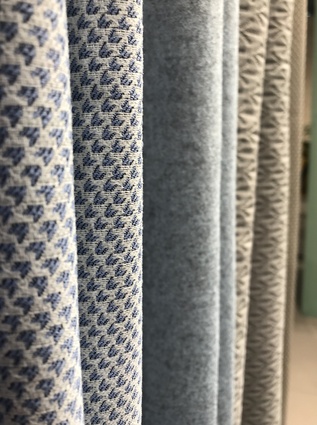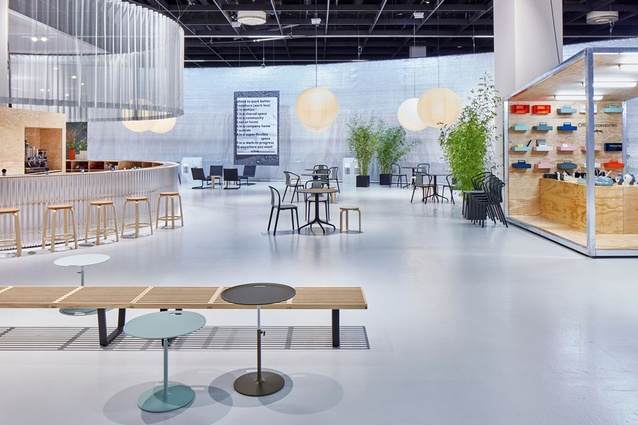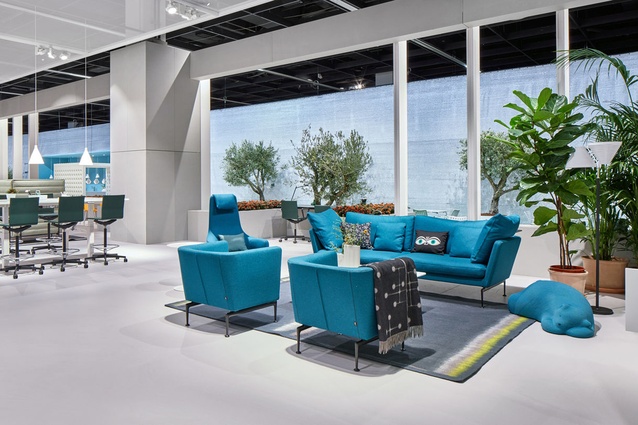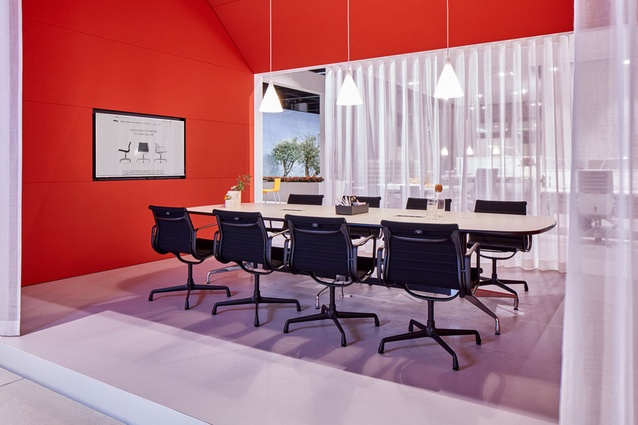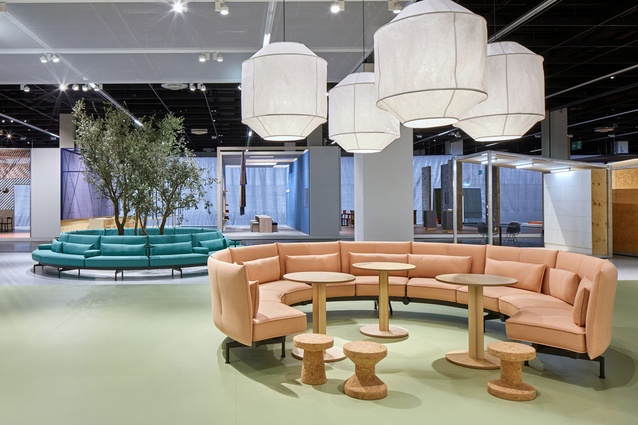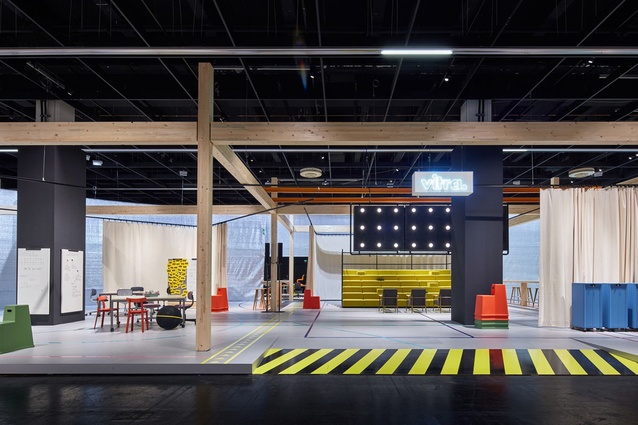The world of work: Orgatec 2018
Orgatec is one of the world’s top commercial trade fairs. Held biannually in Cologne, Germany, the event sees over 50,000 visitors and covers 130,000 square metres of exhibition halls. Two kiwis – Michael Leng, interior designer at Wingate Architects, and Emma Harvey-Gibbs, senior FF&E consultant at Unispace – review themes and trends from the 2018 iteration of Orgatec.
The Age of Agility
It may well be the most interesting time for commercial design in years; a new wave of millennials are flooding into the workplace, and they’re influencing the entire workforce’s attitude towards flexibility, mobility, sustainability and change.
No matter our vocation, to some degree we all lend ourselves to routine and thrive in structure. That doesn’t mean our workplace setting needs to reflect this. Trialling different furniture solutions within a workplace can provide amenity that both supports productivity and revitalises staff: encouraging new ways of working and interaction in an otherwise simple space.
It was clear from suppliers and their exhibition stage designs at Orgatec that agility and forming intimate, enclosed spaces without walls or dividers was the immediate focus. In a period where open-plan, clean floorplates are favoured, focus is on furniture design that can acoustically support these environments and divide spaces. Clever design has created products that incorporate plug and work/play technology, giving flexibility of use and ensuring longevity of the investment.
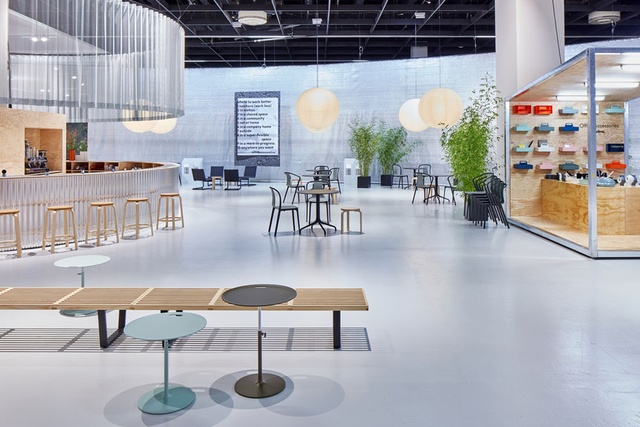
To give an example of this, Vitra’s exhibition – which spanned an entire level of one of Orgatec’s halls – threw a playful, yet functional meaning to the word ‘WORK’. The clever and evoking gallery featured fun and flexible products, from modular seating and mobile space dividers, to sustainable design and power and data integration.
Every item was fully prepared, ergonomically and functionally, to support productivity. In a large, open space, they created a workplace that was inviting, interesting and fun: a place you want to be in, not somewhere that would evoke those ‘Monday blues’.
In terms of specific items, some of the new season’s approaches to desks, chairs and wall dividers would be of interest to New Zealand businesses.
While sit-to-stand desks have been at the forefront in the desk world for a little while now, they continue to evolve. And, I’ll be bold enough to say, I think they’ll start to disappear. Of the samples I saw at Orgatec, desks/workstations are becoming more fluid. They came in interesting in shapes and sizes, with finishes that are becoming playful and calming. The impact will contribute to making workspaces more welcoming and adaptable to how each individual likes to work from day to day.
Vitra has spent time focusing on touchdown chairs. I found the Rookie chair particularly interesting. For a sleek design that wouldn’t look out of place in an architect’s office, it was surprisingly comfortable and supportive. They have a small footprint and are extremely light, making them great for a touchdown or meeting setting.
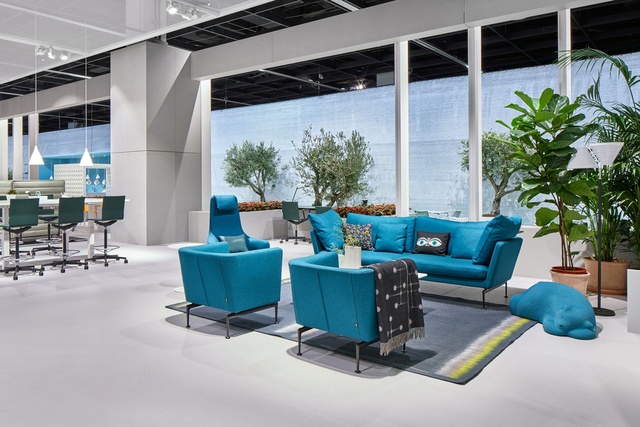
The item that stirred the most excitement for me was, perhaps not ironically, the Dancing Wall, designed by Stephan Hürlemann: a mobile, flexible, aesthetically pleasing, non-structural divider. Hitting all of today’s trends, it’s a utility piece that can support so many different workplace activities. Whiteboards and pin boards can be attached or removed, the face can be transitioned between wall and desk and it can accommodate planting. In terms of application in a workplace design, the Dancing Wall would be great for team and group areas.
Many manufacturers are in touch with the needs of employers, and these are just a few examples of the types of furniture solutions that are being developed. We’re seeing many variations on solutions to these same needs. Mobile, multifunctional, acoustic and integrated, the agility of these pieces makes them a cost-effective solution to any workplace design.
Designed to an impressively high standard, the furniture that’s coming our way is fit to transform a space in look and function dramatically in seconds.
My overall takeaway from Orgatec is that the modern workplace is rapidly becoming a theatre, and the furniture is the set.
– Emma Harvey-Gibbs
The wow factor
The theme for this year’s Orgatec revolved around culture: a key phrase that is prominent in any workplace. ‘Culture @ Work’ brought new and existing brands together and tied them in with emerging designers to showcase their products at the highest level. Each display embraced current and future trends, innovation, technology, materials and colour; they also addressed issues that might occur in the workplace.
The five-day event took place in eight exhibition halls, some split level, with numerous brands, each attempting to outdo one another. The sheer scale of the fair meant that each brand not only competed in showcasing product, but they also needed to create a memorable experience, which became a major component for brands to have a strong identity and presence. Depending on brand and ethos, the stand might almost imitate the size of a real showroom, with a genuine investment in those who visit. It is treated more like a pop-up than a display.
At the fair, the ‘wow factor’ was prominent. This was my first time visiting Orgatec and I was quickly drawn to the colours and materiality that surrounded me. On display were the tools that play a major part in increasing our productivity, the technology that gives good insight, acoustic solutions and pod solutions. There was a general focus on new products emerging in the commercial market.
Vitra seemed to fully embrace how we work on a daily basis in public and office spaces at their stand. Of particular note was the Soft Work range by Edward Barber and Jay Osgerby: a modular sofa system with a flexible integration of technology. The major component was the frame and how each part was pieced together.
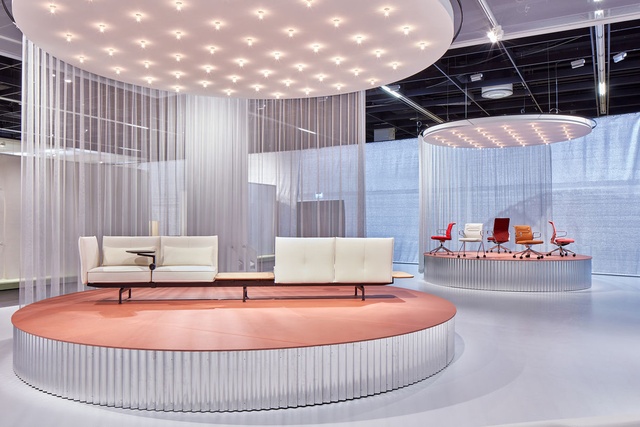
Walking around the fair, it seemed many brands had their own version of an acoustic pod, but the stand out was Framery; they showcased their range in different sizes and uses. Each pod design has superior acoustics, a patented air-ventilation system and incredible functionality.
Brands such as Muuto, Normann Copenhagen, Haworth and Cappellini played with colour and materiality well; each brand responded to the current market trends and, although their displays featured different blends of colour, each came through strongly. The key was depth of colour and rich hues; greens, yellows, neutrals and reds were prominent.
Muuto’s colours gave a fresh, modern approach for their range, and Normann Copenhagen greeted Orgatec with their largest ever stand at 600 square metres, emphasizing colour application through the whole range. Giulio Cappellini’s stand utilised a colourful Terrazzo called Gong. Textiles by Patricia Urquiola, designed for Haworth, popped out and gave commercial furniture a twist.
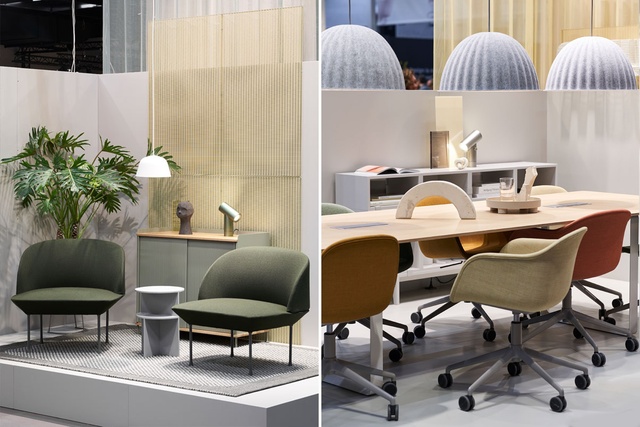
After visiting numerous stands, there were two things that really stuck out: two moments where some time was needed to comprehend who or what was in front of you. First was meeting Patricia Urquiola. She is one of those designers you would never meet unless you went an event like this, and it was lovely to meet her. She was a representation of a designer who will continue to develop new products and revolutionise our industry.
Second was seeing Vitra, one of the fair’s main draws. The company had a whole hall dedicated to their product offering themed ‘WORK’ and provided a great clarity with regards to integration of technology, acoustics, embracement of colour and materials and a strong connection to the past with respect to good design. Vitra was a combination of innovation and inspiration that hit the mark.
– Michael Leng

